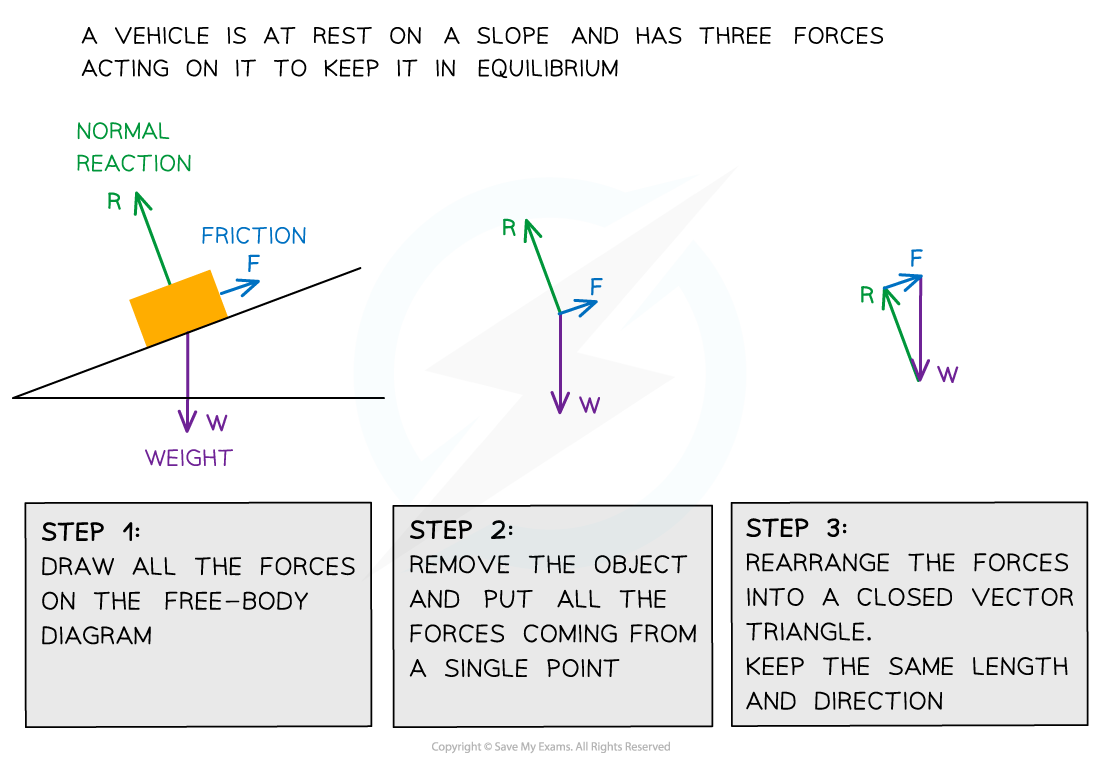Conditions for Equilibrium (Cambridge (CIE) A Level Physics): Revision Note
Exam code: 9702
Equilibrium
A system is in equilibrium when all the forces are balanced
There is no resultant force
There is no resultant torque
In accordance with Newton's First Law, an object in equilibrium will therefore remain at rest, or at a constant velocity, and will not rotate
The system is in an equilibrium state when applying the Principle of Moments
Worked Example
Four beams of the same length, each have three forces acting on them.
Which beam has both zero resultant force and zero resultant torque acting?

Answer:
Step 1: Consider the principle of moments
Zero resultant force and zero resultant torque mean that the beam is in equilibrium
Therefore, for the correct answer:
clockwise moment = anticlockwise moment
Step 2: Calculate the clockwise moments for each answer option
For answer option C
Taking the pivot to be the point at which the 15 N force acts
Therefore, there is no moment caused by the 15 N force because d = 0
Step 3: Calculate the anticlockwise moments for each answer option
For answer option C
Step 4: Determine if the beam is in equilibrium
clockwise moment = anticlockwise moment
Therefore, beam C is in equilibrium
Coplanar forces in equilibrium
Coplanar forces can be represented by vector triangles
For a recap on vector triangles see Scalars & Vectors
Forces are in equilibrium if an object is either
At rest
Moving at constant velocity
In equilibrium, coplanar forces are represented by closed vector triangles
The vectors, when joined together, form a closed path
The most common forces acting on objects are
Weight
Normal reaction force
Tension (from cords and strings)
Friction
Forming a vector triangle for forces acting on a body in equilibrium

To form a closed vector triangle, draw a free-body force diagram, then rearrange the force arrows tip to tail maintaining the length and directions of the vectors
Worked Example
A mass hangs in equilibrium from a cable at point X. The tensions in the cables are T1 and T2 as shown.

Which diagram correctly represents the forces acting at point X?

Answer:
Step 1: Draw a free-body force diagram identifying the direction of all the forces

Step 2: Arrange the vectors into a triangle, maintaining the magnitudes and directions

Step 3: Check that the vectors form a closed path

The correct answer is A
This is the only vector triangle forming a closed path
Examiner Tips and Tricks
The diagrams in exam questions about this topic tend to be drawn to scale, so make sure you have a ruler handy!

Unlock more, it's free!
Did this page help you?